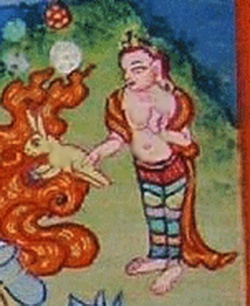Buddhist rituals
Buddhism is a path of transformation. This means that it is not enough to understand it intellectually. Following the Buddhist path means that we must engage the emotions and the imagination. To have that emotional engagement means having devotion or faith, and ritual is a way of directly engaging the emotions.
Buddhist rituals usually consist of three main elements: recitation, chanting and the making of offerings. The verses recited are usually associated with the principal tenets and ideals of Buddhism; and they give expression to the spiritual aspiration which makes someone a Buddhist. Buddhists usually chant in either Pali or Sanskrit (two ancient Indian languages) and chanting is a way of forging an emotional connection with Buddhist ideals. Sometimes Buddhists chant mantras, symbolic representations of Enlightenment in sound form. Offerings usually consist of flowers, symbolising both beauty and impermanence; candles, symbolising the radiance of Enlightenment; and incense which pervades the air in the same way that a life lived ethically touches the world.
